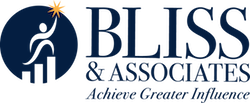If you are a manager, you are a busy person in today’s scaled-down workplace. Your job has become more difficult over the years. Some examples include:
• Layoffs have made your job more demanding
• Technology has made your job more challenging
• Information overload has made your job more taxing
• Employees have made your job more complex, especially needy employees!
As I said in my last post, Five Steps to Make Great Hiring Decisions – Every Time a comprehensive job description is a necessity to making great hiring decisions. But, a comprehensive job description can serve several more purposes. Comprehensive job descriptions can also be used for:
• Performance Management
• Goal Setting
• Employee and Leadership Development
• Succession Planning
Having written several hundred job descriptions for positions in dozens of disciplines, for positions in public, private, family owned, not for profit organizations, here is a format I like to follow that allows the organization to make maximum utilization out of such a tool.
1. Title – Get this right! Don’t say “Accounting” or “Warehouse”. These words identify the location of the position, but do not give any indication as to the duties or role of the position.
2. Reporting Relationship – Who does the position report to, not by name but by title. This small step immediately eliminates a lot of potential confusion, yet is so often left out.
3. Position Summary – This is a 5-6 sentence paragraph that provides an overview of what the position is accountable for performing. It is useful to use in job postings, both internal and external in advertisements and job boards, or when you are sending the job spec out to your network of colleagues to ask for referrals.
4. Job Duties and Accountabilities – This section usually provides 10 or more (but seldom less than 20) tasks the job will perform. Take some time to explain what the duty or accountability encompasses. To say, “Prepare accounting reports” is not sufficient. That statement is too general. Do you want the person to prepare payables, receivables, fixed assets, cash management, bank reconciliation, budget, SEC, audit, etc. reports? Probably some, but generally not all of these types of reports are prepared by one position, unless the organization is very small.
5. Background and Experience – This section provides insight into the kind of education, skills and talents that successful performers must have to be considered for this position
6. Key Goals – This section will provide 5-7 priority goals, perhaps using the SMART goal format that you expect the person to perform in the course of a year.
7. Key Performance Indicators – This section provides measurable performance metrics you will use to assess the person’s performance in this position. If your company follows the Balanced Scorecard approach, some of those measures can be put in this section.
8. Competencies – This is perhaps the most important section, especially for hiring and development purposes. This names and describes those skills, talents, behaviors and habits that are needed for success. It is different from the Background and Experience section, which is an overview. Listed here are generally the 8-12 key competencies that are needed for successful performance. It is better to be specific in the description of these competencies. For example, instead of “Familiarity with MS Office” be more descriptive with language such as, “designs, develops, and maintains spreadsheets of moderate complexity using MS Excel”. Purposeful interview questions can be derived from this section, along with the opportunity to compare candidates to the position, and not candidate to candidate.
With care and attention, developing a comprehensive job description can be one of the most valuable tools in a manager’s toolkit.
What else would you add?


Bill, great post on job descriptions. In my practice I frequently find vague job descriptions that effectively say, “Do all the usual stuff in this area” instead of laying out the specifics. Failing to specify what is expected leads to poor employee performance, because what the employee thinks is what’s expected may not be what management thinks (s)he should be doing… and both are looking at the same job description. Getting the job description right is VITAL!
Best,
Dan
Dan, Getting the job description right really is VITAL as you say. So much of meeting expectations, high performance and job satisfaction hinges on this, yet many managers overlook the value of this tool.
Thanks for your comment.
Bill